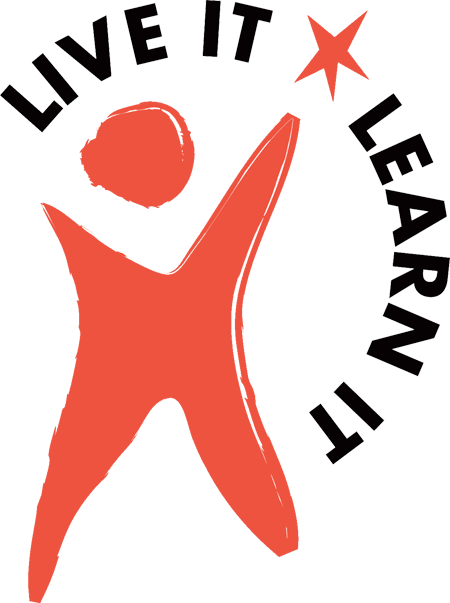our curriculum
Live It Learn It offers a robust menu of 24 academic programs at some of the most interesting and important sites in the nation’s capital. We work closely with educators at our partner sites to develop rigorous and engaging activities that are interdisciplinary, age-appropriate, and aligned to Common Core standards.
Using macroinvertebrates and water quality tests as their guide, students explore the idea that small things can indicate big problems in a stream habitat.
Students learn nutrition guidelines, and apply what they have learned as they design a meal around a plant that they pot and bring home.
Students learn how to identify value in paintings and work with a resident teaching artist to create landscape drawings inspired by paintings at the Kreeger Museum.
Students examine the important role that kids and young adults have played in historical and contemporary social movements with a focus on the 1963 March on Washington.
By analyzing objects and comparing them to excerpts from Douglass’ autobiography, students think like a historian to learn about his life as a slave and later an abolitionist.
Students uncover the history of the Library of Congress through the analysis of symbols present in its mosaics and sculptures while visiting the world famous Reading Room.
Students explore watershed ecosystems in DC as they learn about chain reactions, native species, and the impact trash can have on our environment.
Students think like zoologists to observe species and learn how different adaptations help animals survive in unique habitats.
Students learn to interpret sculptures and uncover the messages communicated in the artwork by Alexander Calder and other artists at the National Gallery.
Students investigate the causes of the Civil War and how multiple “Freedom Defenders,” from Abraham Lincoln to Frederick Douglass to Sojourner Truth, fought to end slavery.
Students learn about the enslaved community at Mount Vernon, including the important work they did, the injustices they faced, and the ways they resisted their enslavement.
Students explore the difficult and dangerous lives of spies by adopting a cover, analyzing clues, decoding puzzles, and solving a mystery, all without being caught.
By conducting water quality tests in the classroom and catching fish on the Potomac River, students learn the indicators of a healthy aquatic ecosystem.
Students learn to interpret and use the elements of art as a way to uncover and communicate messages through artwork.
Students create self-portraits to reveal and celebrate their identity after learning how artists tell stories of people through composition, symbolism, and expression.
Students explore the culture and environment of three American Indian nations as they search for objects that have gone missing and why they are important to these nations.
Students use letters, photos, and radio broadcasts to explore the struggles faced by the American people and President Franklin D. Roosevelt during the Great Depression.
Through the exploration of art, music, and masquerades students learn about the cultures of two West African countries, and then apply what they have learned to create their own masks.
All plants have roots, stems, and leaves, but students must think like botanists in order to discover why plants in various environments adapt to look a certain way.
Through Lawrence’s paintings, students learn about the exodus of African Americans from the South during the Great Migration.
Through exploration of the five senses, artwork, and vocabulary, students build an understanding of art interpretation and expression in and out of the classroom.
Students learn what it means to be a shero by investigating the lives of four women Civil Rights activists, while following the journey of historical activists throughout the museum.
Students use many historical photographs and journal entries from a fictional boy, Daniel, to learn about the events before, during, and after World War II and the Holocaust.
Thinking like geologists, students learn to conduct rock and mineral identification tests and record results to discover which rocks or minerals can solve everyday problems.
Interested in partnering on a new unit?
Whether you are a local museum, environmental program, or the like, we invite you to reach out if you have a collaborative opportunity in mind.
























